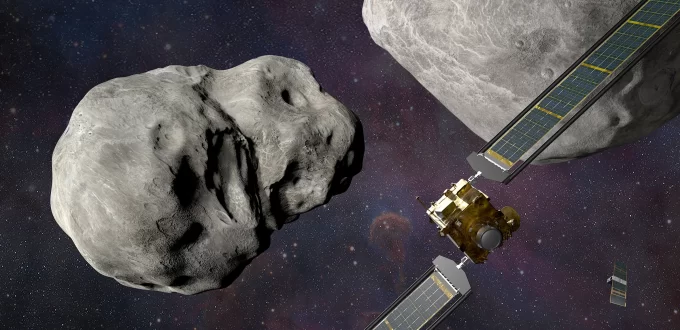In about 60 days from now, Nasa Dart Space aircraft will deliberately eradicate asteroids. Short for the double asteroid transfer test, this mission intends to test the idea of the asteroid deflection by slamming space aircraft into space stones to change its direction. This idea will help if and when the asteroid of the mass extinction comes to slide towards our planet.
Recently, the European Space Agency (ESA) shared a video illustration of the collision that will occur 109 kilometers of crore from Earth. Space aircraft will collide with an asteroid called Dimorf (diameter of 160 meters or 530 feet) which orbits a larger asteroid named Didymos (diameter of 780 meters or 2,560 feet). Interestingly, Dart is accompanied by another explorer named Hera which is a contribution from Esa.
Developed as an asteroid detective, Probe will meet with an asteroid system to check after the Dart kinetic impact test. This will investigate the close-up collision scene by sending two cubesats and measuring the crater left by the Dart collision.
Hera to check the consequences of the collision
Two cubesats included in Hera to check the impact are Milani, Decoder Rock and Juventas, Radar visionary. Probe will also photograph the spacecraft that crashes into an asteroid because the last camera will be destroyed after a collision. “Demonstrating new technology from autonomous navigation around the asteroid to low gravitational proximity operations, Hera will be the first investigation of humanity to meet with a binary asteroid system,” Esa said in a statement.
Recently, a study, conducted by the University of Bern and the National Competency Center in Research (NCCR), claims that collisions will destroy asteroids are far more severe than anticipated. Launched in November last year, the spacecraft will slam into the dimorph with a speed of 23,760 km to see whether the impact is changing the asteroid position and orbital path.
The conclusion about the consequences is drawn through simulations that take into account the post-impact shock waves and the process of marriage together with the fact that Dimorphos has a loose nucleus instead of dense and solid which is packaged.


No Comments Yet